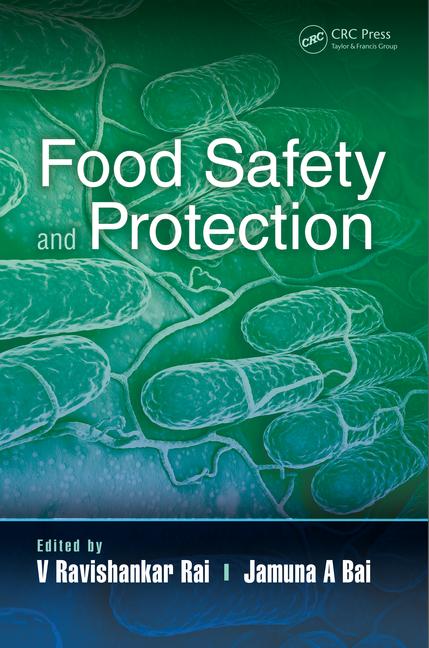Addressing the Food Safety Challenges of the Plant-Based Food Industry

Image credit: dhanya purohit via Unsplash
Allergies to dairy products, including milk, are among the top food allergies that consumers worldwide experience. There are 32 million allergy sufferers in the U.S. alone, 4.7 million of whom have a severe milk allergy. Furthermore, it is predicted that 70 percent of adults globally have displayed lactose intolerance in some way. As a result, significant players in the dairy business must develop new products that satisfy consumer demands.
The market worth of plant-based milk in 2021 was $35 billion USD, and it is predicted to grow to $123.1 billion USD by 2030.1 Since the 1980s, low-lactose products have been accessible. However, there has been an increase in interest in plant-based dairy substitutes in recent years. Some of this need has originated from those with lactose intolerance or dairy allergies. However, as consumers read food labels and consider the ethical and environmental implications of their diet preferences, plant-based milk has emerged as a desirable substitute for conventional dairy goods.
Traditional dairy processors have begun to develop various milk alternatives alongside their standard product lines to adapt to shifting consumer demand. To effectively analyze and test traditional product lines while overcoming the difficulties of testing novel plant-based milk, they must have access to adaptable instruments.
Plant-Based Products: Food Safety Challenges
Plant-based meals and dairy replacements face a diverse set of food safety challenges.2,3 In the dairy business, for example, raw milk is one main ingredient that is generally stable in terms of nutritional composition, physical properties, and microbiological contaminants.
Food companies still need to learn some unique plant-based ingredients, which creates additional difficulties in terms of plant-based foods. Plant-based proteins often have higher spoilage risks than animal proteins because of the variety of raw materials used to make them. As a result, careful monitoring of the hazards to food safety is necessary to create novel food products. Manufacturers must take action to ensure that they provide plant-based foods to the market as consumers continue to seek cleaner food that is devoid of heavy metals, pesticides, and vertebrate DNA.
The following are the primary food safety concerns for producers of plant-based alternatives, along with the applicable control measures:
- Microbial growth: Milk alternative products have near-neutral pH and moisture content and high protein, making them prone to microbial growth. Extrusion treatment is one of the critical control points that promotes the safety and shelf life of the product.
- Cross-contamination from animal ingredients to plant-based foods: Vegan producers must examine this issue throughout their entire supply chain. This danger is significant in vegan food processing, particularly in facilities that handle animal-derived allergenic substances such as milk, gluten, and eggs. The existence of undisclosed animal allergies in vegan-labeled products can cause major health consequences, costly recalls, and irreparable reputational harm.
- Off flavors in formulations: As plant materials are processed, off flavors can develop (for example, grassy and beany flavors from soybeans or bitter and astringent flavors from saponins and isoflavones). The formulation is required to cover up or lessen the intensity of these unpleasant flavors.
- Shelf life for alternative proteins: To determine the expiration dates and guarantee the safety of novel plant-based products, studies on formulation, reformulation, shelf life research, and process validation may be required.
- Presence of contaminants: Plant-based components and soy isolate frequently contain heavy metals, herbicides, and hexane; testing must establish their safety.
Before being marketed, all plant-based food and beverage products must adhere to food safety regulations. However, with the assistance of a reputable third-party laboratory, it can be easier to meet commercial and regulatory standards in the food sector.
Low in Lactose, High in Quality
Low-lactose products started to become widely available in 1985, when the U.S. Department of Agriculture (USDA) created technology that enabled milk processors to produce lactose-free milk, ice cream, and yogurt. This allowed consumers who previously had to forgo dairy products to continue to benefit from their nutritional value without experiencing any negative side effects.
Routine in-process analysis in lactose-free dairy manufacturing, like traditional dairy products, is frequently carried out using infrared spectroscopy due to its rapid reporting. Additionally, it is simpler to determine the presence of lipids, proteins, and carbohydrates due to the well-documented wavelengths used to distinguish dairy components.
Fourier transform infrared (FTIR) technology is the most often utilized infrared spectroscopy tool for dairy analysis. Even at high solid levels, the cream is still highly liquid, so FTIR is utilized to identify and analyze its constituent parts. Near-infrared (NIR) spectroscopy can produce significantly better findings for materials with higher solids, typically above 20 percent. FTIR technology is essential to the production of low-lactose goods in particular because it may be used to track lactose breakdown.
Some consumers must completely avoid dairy products. Allergies affect the body's immunological system, as opposed to intolerances, which only affect the digestive system. This implies that components that cause allergies, such as milk or dairy, are considered invaders and may cause serious adverse reactions, like anaphylactic shock, when consumed.
Plant-based milk sales increased by 61 percent in the U.S. from 2012 to 2017. It has been more crucial to produce plant-based milk due to the rising demand and the necessity to offer options for people with allergies. Although it is still crucial to quantify the amount of fat, protein, and sugar in these goods, processing these substances presents unique difficulties.
Plant-based milk is frequently produced with additional ingredients or as a combination of two plant milks to replicate regular dairy products. Cane syrup or salt is added to improve flavor, while sunflower or safflower oil may be added to boost viscosity. Stabilizers or acidity regulators are also present because they have the potential to alter the milk's stability. Oat milk is naturally high in carbs, whereas coconut milk has a high fat content but is relatively low in protein and sugar. This makes them viable for various applications and implies that diverse analytical techniques are needed to quantify their constituent parts.
Although many FTIR and NIR equipment may be used to analyze plant-based milk in the same manner as dairy milk, processors face challenges due to the continuously changing formulation variations. Many businesses have started to create plant-based milk adjustments that may be used in conjunction with already-existing infrared sensors in an effort to help overcome these difficulties. Standardized calibrations exist to ascertain the protein, fat, solids, and sugar composition of innovative goods. With further research and data, these might be improved to provide calibrations for soy, almond, and oat milk.
Plant-based milk can gain from the integration of diode array (DA) NIR instruments into existing processes, in addition to the FTIR and NIR instruments used for conventional dairy testing. These devices are crucial for the quick reporting of numerous tests throughout the day because they can deliver findings in around 6 seconds, as opposed to the 30 seconds of standard IR equipment.
Conclusion
Despite the growing popularity of dairy-free products, many plant-based milks are also made from ingredients that cause allergies, including soy, almonds, and peanuts. Therefore, having low-lactose substitutes available on the market is still beneficial to give consumers various choices.
Dairy and emerging plant-based milk processors require access to devices that can conduct precise compositional analyses quickly and effectively. It is crucial that the instrumentation used by dairy processors to make low-lactose or dairy-free milk substitutes is adaptable and used for the examination of all product outputs.
References
- Strategic Market Research. "Plant-Based Milk Market By Product, By Formulation, By Application, Global Report By Size, Industry Analysis & Forecast, 2021–2030." August 2022. https://www.strategicmarketresearch.com/market-report/plant-based-milk-market.
- Mérieux NutriSciences. "What are the biggest food safety risks for plant-based foods in 2022? Strategies to address plant-based food safety gaps & protect your brand." June 8, 2022. https://www.merieuxnutrisciences.com/asia/food-safety-risks-plant-based-foods/.
- Floris, R. "Safety Challenges for Plant-Based Foods." NIZO. https://www.nizo.com/blog/industry-insights-from-nizo-safety-challenges-for-plant-based-foods/.
Looking for a reprint of this article?
From high-res PDFs to custom plaques, order your copy today!








